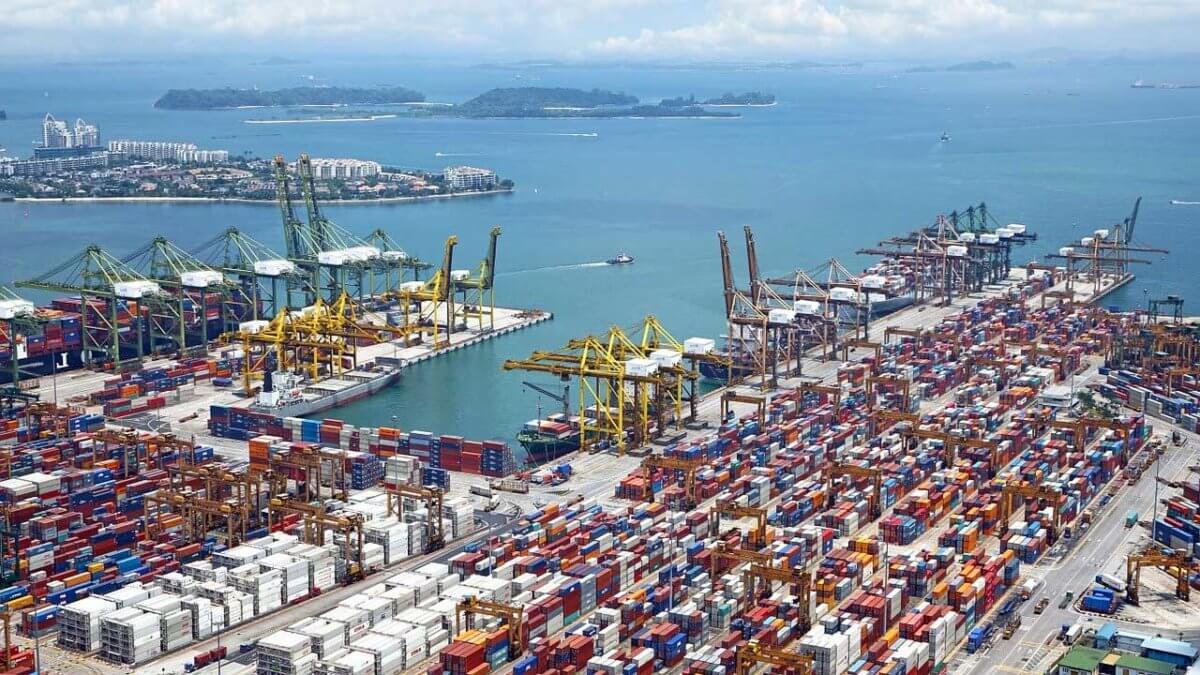DIFFERENT TYPES OF SEA FREIGHT TRANSPORTATIONS
Logistics consists of transporting a good or a raw material from one point to another. When it comes to planning this operation, many factors that need to be managed come into play: the specific requirements of the nature of the product, the budget allocated to its transportation, its source and destination, the schedule, and climatic conditions to list a few. The expertise of your logistics service provider lies in the effective management of all visible and invisible components of this process.
The main expense item in logistics is the transportation stage. The most affordable method in logistics, especially when it comes to long distances, is sea and ocean freight transportation.
In this article, we would like to talk about the benefits of sea and ocean freight transportation and the different types of sea and ocean freight transportation that are available.
Sea freight transportation is divided into two main groups depending on the type of shipment.
1.) Tramping
2.) Linear transportation
- Tramping: It is an on demand charter system where the ships are not operated on a regular line but rather leave when they are full. Tramping is often used in the transportation of raw materials such as iron, crude oil, wood, coal, etc., all kinds of bulky goods that easily fill the ship and be transported at once. Ships travel to ports where raw materials are abundant, waiting to be filled. In this type of service, the costs are irregular because the organization of shipments is centered on the load.
- Linear transportation: Unlike tramping, linear transport is used to provide a regular, punctual and highly controlled service. The ships follow fixed and predetermined routes, sail at regular intervals between predetermined ports, and follow a clear shedule. Shipments are made regardless of whether the ships are filled or not. Ro-ro traffic and container shipments are part of this type of shipment.
On the other hand, we can organize ocean freight according to the types of ships used and the types of load carried. In this case we have the following 5 categories:
- Tankers
- Ro-Ro Ships
- Container ships
- Combined transport
- Bulk carriers
- Tankers: this type of tanker is used to transport often dangerous goods, such as petroleum and petroleum byproducts, gas, chemicals and other liquid products. Loads are transferred to ships by the port’s pumping system, and unloaded by the ship’s pumping system. There are mainly two types of tankers used in maritime transport. Oil tankers carrying liquefied petroleum gas called LPG and oil tankers carrying liquefied natural gas called LNG.
- Ro-Ro Ships: In Ro-Ro transport, which is one of the best examples of linear transport, ships make the connection between different stages of road freight transportation. Ro-Ro ships are large ships that transport trucks filled with goods. It is a preferred type of maritime transport for door-to-door or warehouse-to-warehouse operations.
- Container Ships: Containers are the main tools used in ocean freight transportation. These are large chests manufactured to international standards for the transportation of various goods, which, according to ISO standards, have two main sizes of 20 feet and 40 feet. These two types of containers are used in 85% of all ocean transportations.
The history of shipping goods goes back to the Vikings, who loaded ships in pieces or bags which is a method used until much more recently than you might expect. It wasn’t until the 1930s that we saw the invention of the first containers by Malcolm McLean; they took their current form after several attempts. Sea transport capacity has increased considerably since the first container transport in 1956 with a container ship carrying 58 containers. Today, container ships with a capacity of 8,000 to 10,000 TEU travel international waters everyday.
Container transport generally includes the transport of piece goods and is used in linear transport. Containers are usually loaded and unloaded by cranes that are located on the ship. This facilitates the loading and unloading process and saves a lot of time. As a result, waiting times for ships in the port decrease and this makes door-to-door transport much easier. The main disadvantage of container transport is the high design costs of container ships.
- Combined transport: type of transport in which ships are designed to transport oil or dry cargo. Ore, oil carriers and grain are part of this type of transportation.
- Bulk carriers: This is the method of transport in which bulk cargoes such as ore, grain, coal, cement, salt, sugar are transported. The nature of these loads requires the use of intermediate doors during loading and unloading. These intermediate doors aim to minimize the costs of loading and unloading.
Maritime transport, which is 22 times cheaper than air transport, 7 times cheaper than road transport and 3.5 times cheaper than rail transport, has constantly changed and adapted to needs throughout history. This is an extremely broad subject which should be analyzed and presented taking into account all of these components, whether it be the actors or the tools. Ports, ships, transport companies, owners, brokers, freight forwarders, logistics companies, port operators, other organizations serving in ports and all other actors involved in the service should therefore be considered to begin to fully understand the importance of maritime logistics, which affects more than half of all the goods and products consumed today.
The importance of maritime transport is expected to increase further in the coming years. This will cause the current market growth rate to grow exponentially. Therefore, being able to provide value added services in maritime transport will be a considerable competitive advantage for companies in terms of competition and sustainability.



